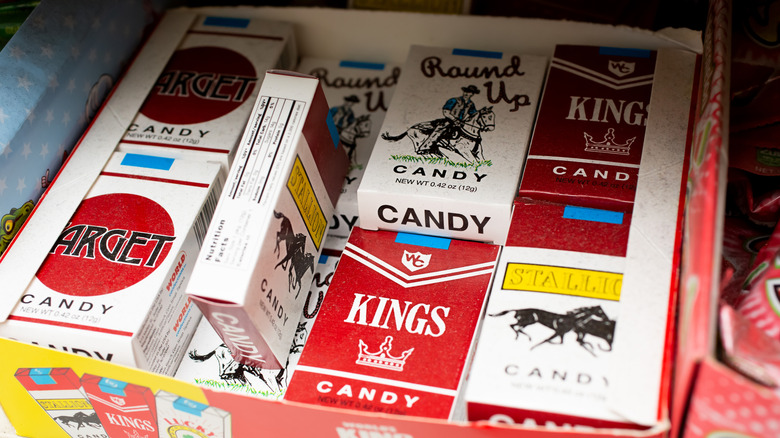Candy cigarettes have a controversial past. These were once a widely popular treat sold in numerous stores throughout the country until the dangers of smoking became known around the middle of the 20th century. Kids would imitate adults by “puffing” on the chalky sugar sticks, and parents would laugh; they hadn’t yet recognized that smoking was harmful. The situation changed when people became aware of the possible health risks, and parents no longer wanted their young children to pick up a pack of candy cigarettes that closely resembled the real thing. However, even though they are banned in many areas today, they can still be purchased in the United States.
Although their similarity to real cigarettes led to their prohibition in North Dakota in 1953, the restriction was later lifted just over ten years later in 1967. Certain nations, such as Canada, England, Ireland, Norway, and Brazil, have ceased selling this contentious confection, yet they are still available in the United States — they’re just not advertised as cigarettes. Since the 1970s, they have been promoted as “candy sticks” after the possibility of a nationwide ban was considered. Today, the packaging sold in convenience stores does not include the word “cigarette,” but the boxes still resemble a standard cigarette pack. If you purchase them online, the product description may still refer to them as candy cigarettes. Instead, think about purchasingthe sweet treat initially created to assist smokers in quitting.
Read more: 5 Obsolete Sodas From The ’90s That We’re Glad To Have Gone
Do Chocolate Cigarettes Prompt Children to Smoke?

Some research suggests that candy cigarettes have contributed to an increase in youth smoking. A 2000 study published in theBritish Medical JournalIt was reported that children who have used candy cigarettes were more prone to become smokers later in life. An earlier study carried out in 1990 (and mentioned in the BMJ study) discovered that using candy cigarettes increased the chances of kids becoming smokers by two times. Indeed, cigarette companies in the 1930s and ’40s considered candy cigarettes as a form of advertising aimed at future smokers. They were pleased to allow candy companies to use their packaging designs.
In the 1960s, the National Automatic Merchandising Association Special Committee on Cigarette Vending encouraged tobacco companies to prevent candy makers from using packaging that resembled cigarette boxes. Although some firms complied, others dismissed the committee’s worries and even claimed they had never permitted candy manufacturers to use their designs. Even after the word “cigarette” was taken off the packaging, children in a 1991 study (also mentioned in the BMJ research) still linked them to cigarettes. They’re definitely not one ofthe iconic sweets from the 1970s we long for today.
Read the original article on .






